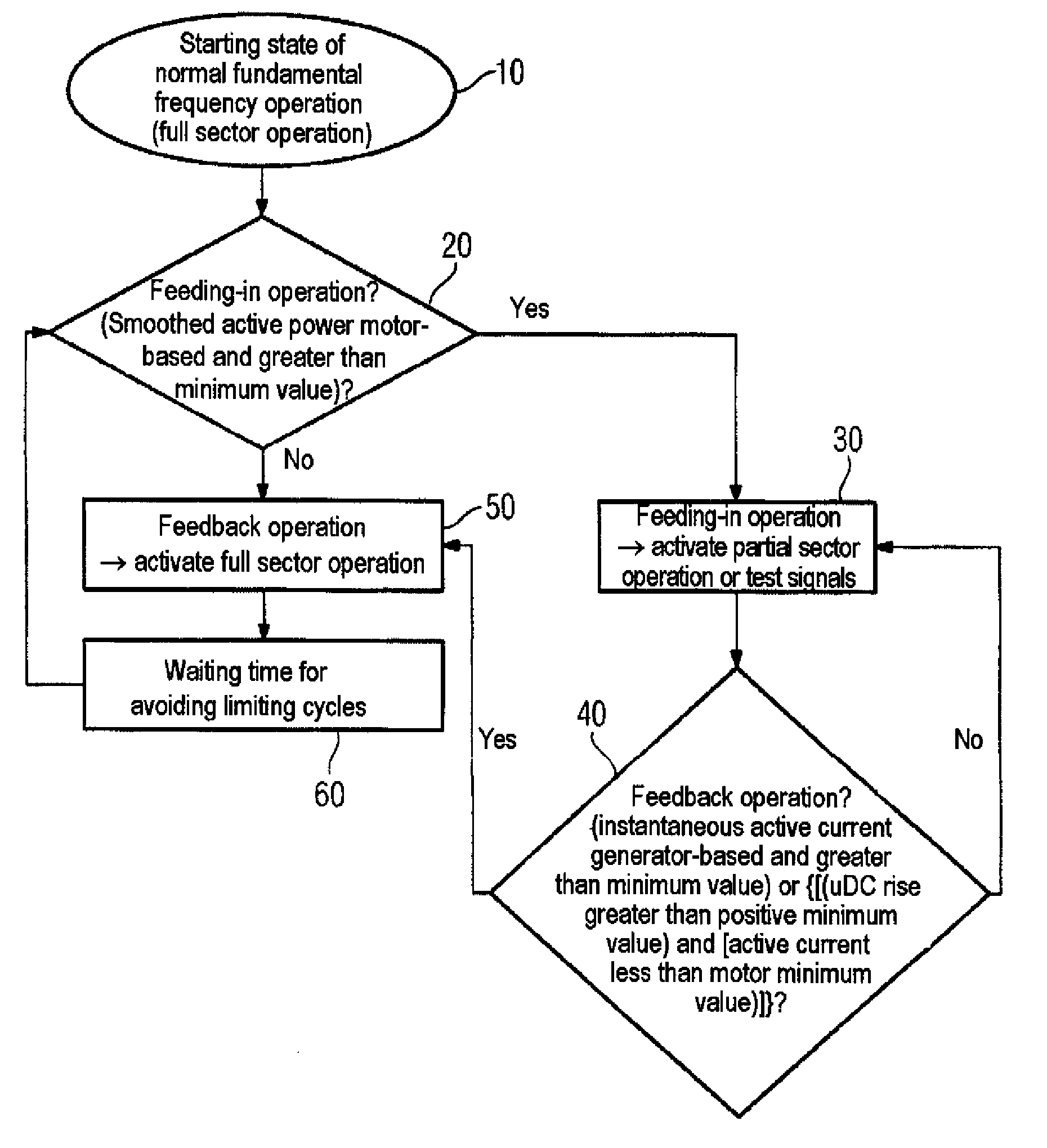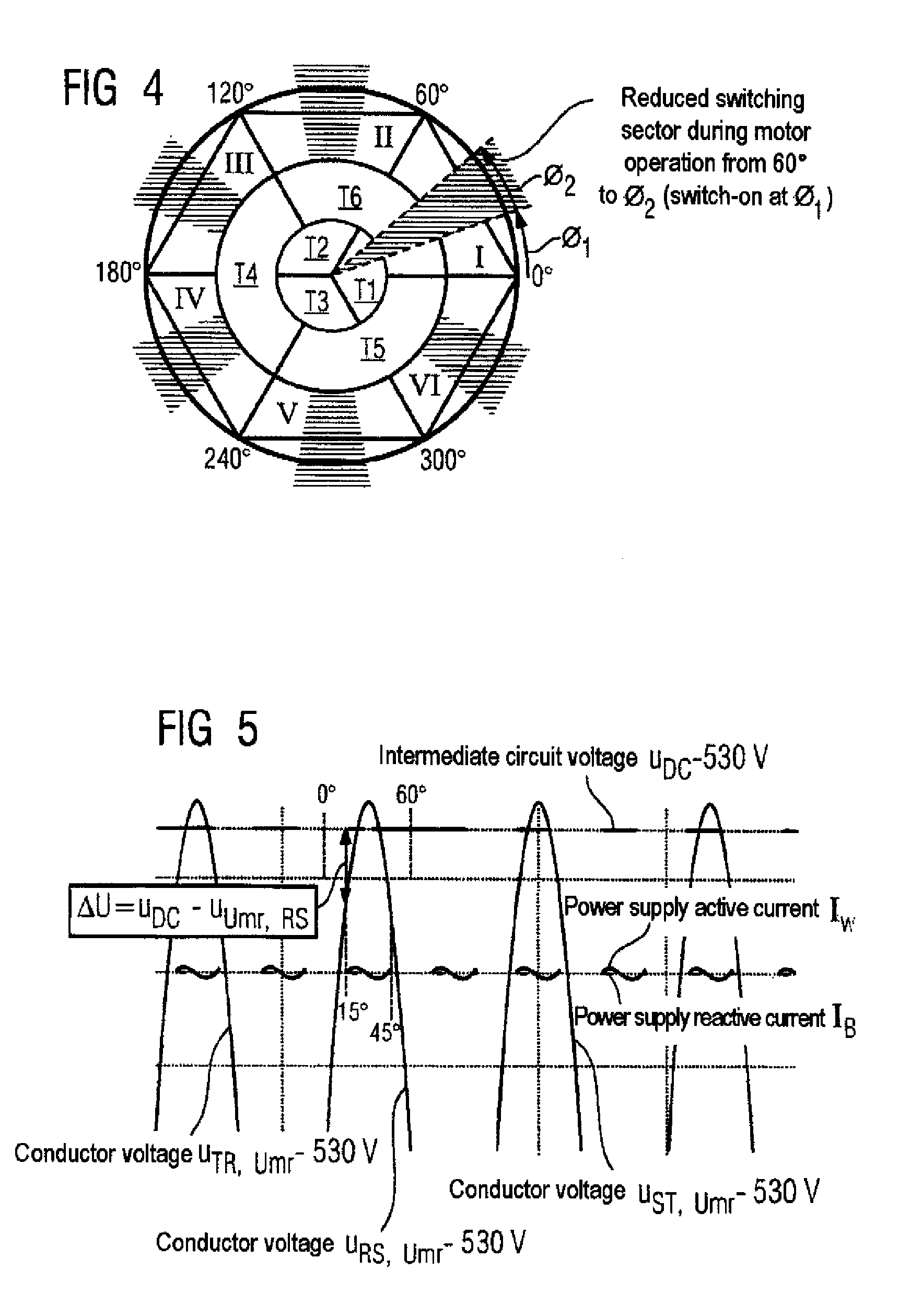Method for reducing the reactive power requirement of a fundamental frequency clocked power supply side converter under no load and with low motor loading
a technology of fundamental frequency clocked power supply and reactive power, which is applied in the direction of electric variable regulation, process and machine control, instruments, etc., can solve the problems of high motor bearing current, large reactive power requirement, and high oscillating curren
- Summary
- Abstract
- Description
- Claims
- Application Information
AI Technical Summary
Benefits of technology
Problems solved by technology
Method used
Image
Examples
Embodiment Construction
[0073]For the preferred solution route, a transformation of the three-phase power supply current into its active component and into its reactive component is used as illustrated schematically in FIG. 2. The representation of the currents and voltages as space vectors is chosen for this purpose. The space vector xαβ in the α-β coordinate system results from the components of the phases R, S, T—phase components hereinafter—as follows:
[0074]xαβ=xα+jxβ=[xαxβ]=23[1-12-12032-32][xRxSxT].(a)
[0075]This definition applies both to the space vector uαβ of the power supply voltages uR, uS, uT and to the current space vector iαβ of the phase currents iR, iS, iT, where x in equation (a) is replaced by u and i, respectively. The time dependence is not explicitly incorporated in this case. The space vector iαβ rotates with the power supply frequency about the origin of the α-β coordinate system. Transformation into a coordinate system which rotates with the power supply frequency yields the stea...
PUM
 Login to View More
Login to View More Abstract
Description
Claims
Application Information
 Login to View More
Login to View More - R&D
- Intellectual Property
- Life Sciences
- Materials
- Tech Scout
- Unparalleled Data Quality
- Higher Quality Content
- 60% Fewer Hallucinations
Browse by: Latest US Patents, China's latest patents, Technical Efficacy Thesaurus, Application Domain, Technology Topic, Popular Technical Reports.
© 2025 PatSnap. All rights reserved.Legal|Privacy policy|Modern Slavery Act Transparency Statement|Sitemap|About US| Contact US: help@patsnap.com



